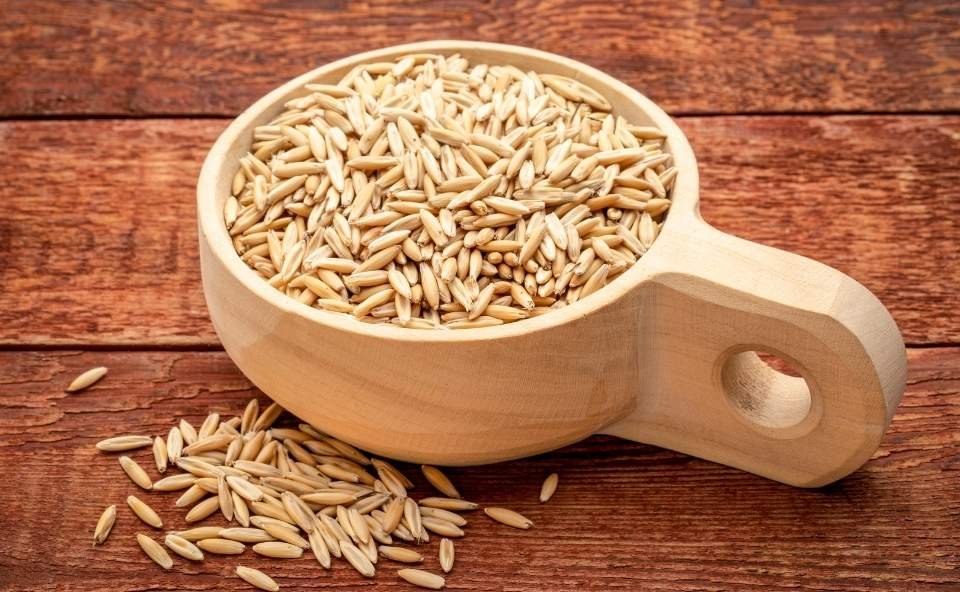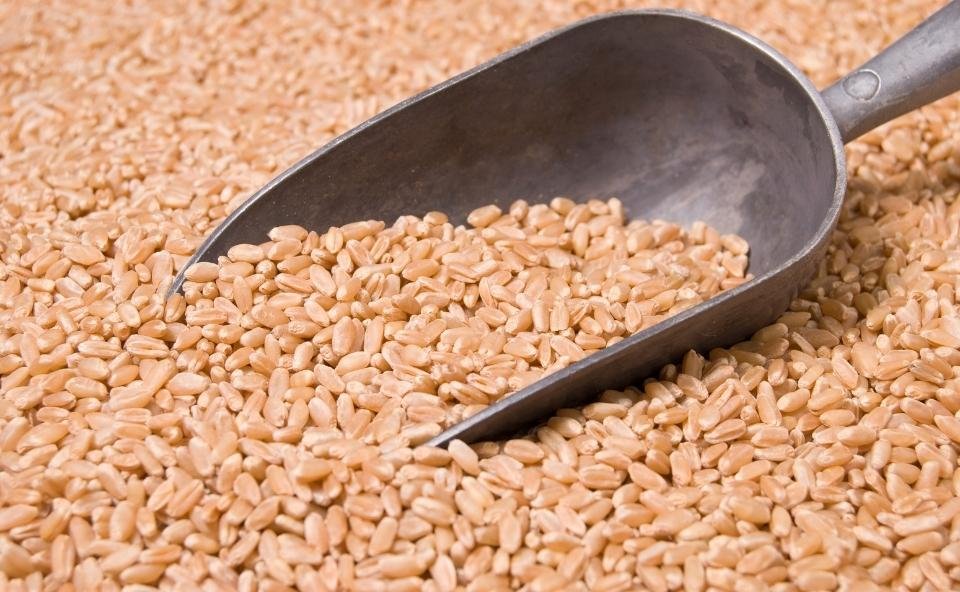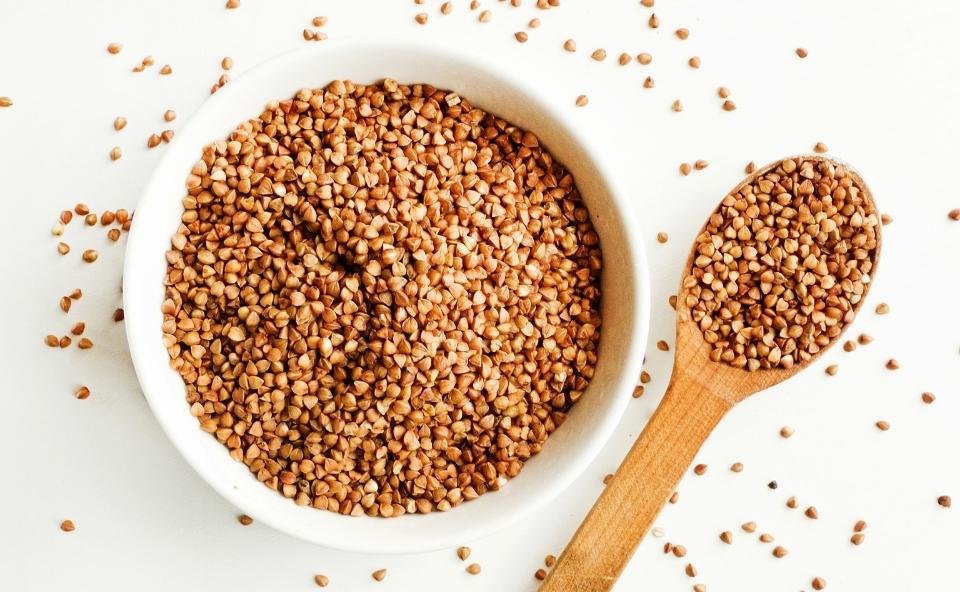I’ve always loved oatmeal for breakfast, but for the longest time, I stuck to the usual varieties—old-fashioned, steel-cut, and quick oats without giving much thought to where they came from. Then, I discovered oat groats, the mother of all oats, and everything changed. These whole grain gems are the least processed form of oats, packed with nutrition and a hearty texture.
At first, I wasn’t sure how to cook them, but once I took the time to learn, I realized why they’re worth it. Unlike the softer, more familiar options, oat groats have a rich, nutty flavor and a satisfying chew.
If you’re looking to expand your list of wholesome foods, I highly recommend eating these delicious, natural oats, they’ve become a favorite in my kitchen!
What are Oat Groats?
If you are looking for a truly wholesome breakfast, oat groats are an excellent choice. Unlike other varieties of oatmeal such as old-fashioned or steel-cut oats, these whole grains are unprocessed, meaning they retain all their natural nutrition.
Most oats go through some level of processing, like being steamed, flattened, or cut into smaller pieces, but groats remain in their purest form. This makes them rich in texture, flavor, and health benefits.

Oat Plants. (Botanical Name; Avena Sativa)
Though their cooking time is longer nearly an hour the wait is worth it. A warm bowl of groats in the morning is both nourishing and satisfying, thanks to their flakey, chewy consistency.
If you’re ready to elevate your breakfast routine, eating oat groats is a simple yet powerful way to fuel your body with long-lasting energy.
How Do Whole Oat Groats, Rolled Oats, and Instant Oats Differ? (Varieties)
I’ve explored these varieties of oats, and I realized that each one has its unique flavor, texture, and cooking time, making it easier to pick the perfect option based on my mood and schedule and you can also do it in the same way.
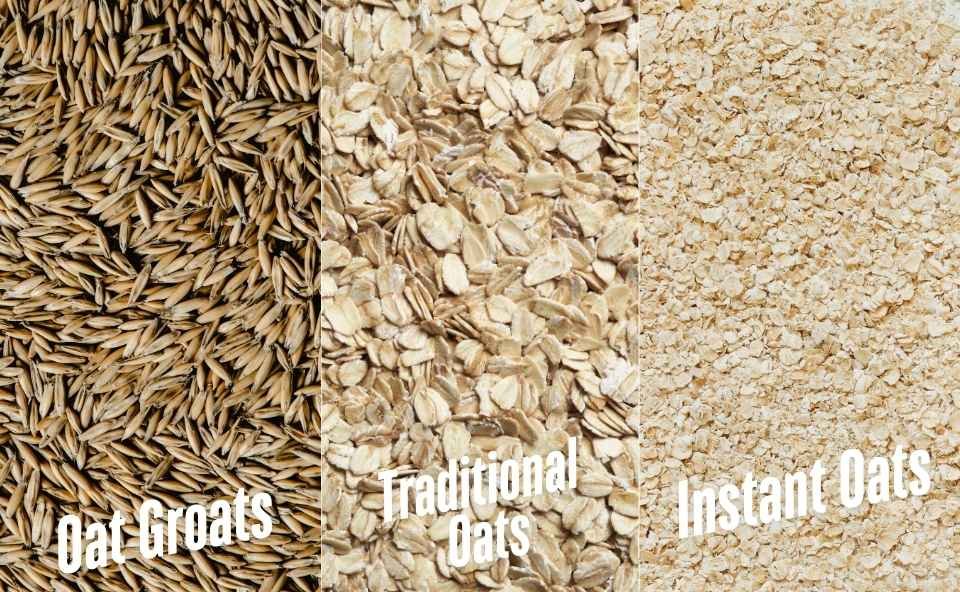
Oats Varieties
1. Whole Oat Groats
I love the hearty bite of whole oat groats, they take longer to cook, but the nutty flavor and chewy texture make every bite worth it. On weekends, I set aside time to cook a big batch, knowing I’m getting all the fiber content and nutritional benefits that keep me energized throughout the day.
2. Traditional Rolled Oats
For busy mornings, these oats are my go-to. Since they’re steamed, smashed, and pressed, they cook quickly without losing that comforting, chewy consistency. Whether topped with fresh berries or a drizzle of honey, they’re a perfect balance between convenience and nutrition.
3. Instant Quick-Cooking Oats
When I’m in a rush, instant oats save the day. They cook in minutes and are great for a quick meal, though I find their texture a bit too soft compared to rolled oats. Still, for those hectic mornings, they’re a lifesaver when I need something warm and filling without the wait.
Let me take you through some key characteristics I’ve discovered, so we can get to know oat groats a little better together.
Taste
Instead of the usual soft, mushy texture, they are chewy and chunkier, making each bite feel satisfying. I loved how the individual grains stayed separate after being cooked, rather than turning into a clump. Their mild, nutty flavor gave my morning bowl of oats a whole new depth, and with a drizzle of honey and fresh fruit, it was delicious.
What I enjoy most is the difference in texture. Sometimes, I crave something creamy, but on days when I want a heartier meal, oat groats are perfect. I take my time to enjoy them, appreciating how wholesome and filling they are.
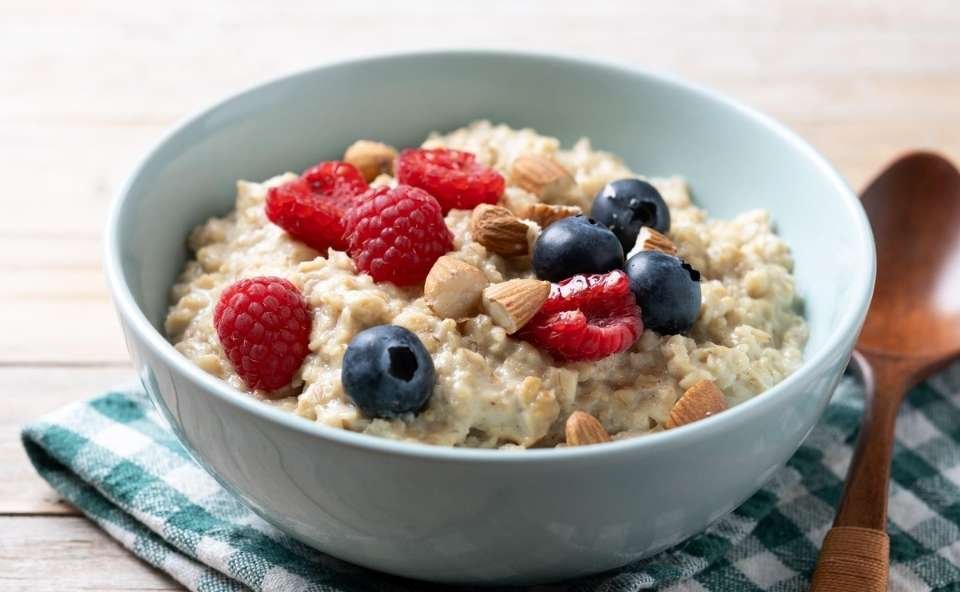
Oatmeal porridge with raspberries, blueberries, and almonds.
If you love oats but want a new experience, give oat groats a try—you might just find a new favorite!
Nutrition
Unlike regular processed oats, these are the whole form of whole oats, packed with an assortment of minerals, vitamins, and powerful antioxidants. One thing I love about them is their high protein content, which helps me fill up faster and stay full longer, which is a huge plus when trying to manage weight loss. I also learned that their soluble fiber supports digestion and helps lower the risk of heart disease, making them a heart-healthy choice.
Since I try to eat naturally gluten-free foods, I was relieved that oat groats fit the bill. However, I quickly realized that they are often exposed to small amounts of gluten when processed in plants handling other grains. If you have celiac disease, like a friend of mine does, it’s worth checking the labels before you purchase them.
Always look for whole grain options specifically labelled gluten-free to be safe!
Nutritional Facts
Serving Size: 1/3 cup (56g) makes about 1 cup of cooked oat groats for 1 serving.
| Nutrient | Amount | % Daily Value |
|---|---|---|
| Calories | 147 kcal | — |
| Total Fat | 4g | 5% |
| Saturated Fat | 1.3g | 3% |
| Cholesterol | 0mg | 0% |
| Sodium | 5mg | 0% |
| Total Carbohydrate | 37g | 12% |
| Dietary Fiber | 5.3g | 20% |
| Total Sugar | 1.3g | — |
| Protein | 9.3g | — |
| Calcium | 7mg | 3% |
| Iron | 1.3mg | 13% |
| Oat Groats |
Cooking Time
When I first started cooking oat groats, I was surprised at how long they take to cook compared to other oats. But trust me, the nutty flavor and chewy texture make it worth the wait!
The cooking method you choose affects the cooking time.
- If you are in a hurry, an Instant Pot (pressure cooker) is a lifesaver, getting the job done in 40 minutes.
- A Rice Cooker takes about 50 minutes.
- While the Classic Stove Top method requires 60 minutes.
- If you love slow-cooked meals, a Crock Pot (slow cooker) works great on low, it takes 4 to 6 hours, and on high, you’ll have perfectly cooked groats in 2 to 3 hours.
One trick I’ve learned to speed up the process is to soak the grains overnight. I just put them in a bowl, cover them completely with water, and let them rest in the fridge for several hours. The next morning, I drain the old water, rinse the grains with fresh water, and then cook them as usual. This makes the texture softer and reduces the cooking time significantly. If you love a wholesome, filling meal, this little extra step is totally worth it!
Best Alternatives for Oat Groats
I love using oat groats in my breakfast recipes, but sometimes I need a quicker option. If you ever find yourself short on time, you can easily substitute them with any other type of oat. Just be sure to adjust the cooking time because oat groats take significantly longer to cook than regular oatmeal. I’ve learned this the hard way when rushing in the morning, only to realize my groats weren’t ready yet!
For a hearty whole-grain salad, I often swap groats with other large whole grains like Wheat Berries, Barley, or Farro. They have a similar chewy texture and soak up flavors beautifully.
When I first tried Farro, I was amazed at how well it worked as a replacement. So, whether you’re out of oat groats or just want to experiment, these grains are fantastic options!
Best Way to Store Oat Groats
I always make sure to store my oat groats uncooked in an airtight container in a dark, cool, dry place to keep them fresh. When stored properly, they have a shelf life of about 1 year.
For those who like to plan ahead, adding them to a long-term storage supply is a great idea. I seal mine in a can or bucket with an oxygen absorber, which helps them last for 5-10 years without losing their natural goodness.
Once cooked, I store them in a covered container in the refrigerator, and they stay good for 3-5 days.
I’ve noticed that other types of oatmeal, like quick or rolled oats, tend to become extra spongy and gelatinous in the fridge. However, oat groats keep their shape and don’t turn mushy, making them a much better choice for meal prep.
Where to Buy Oat Groats
I remember the first time I went looking for oat groats. I had no idea where to start!
After some searching, I finally spotted them in the bulk bins at my local grocery store, hidden between the oatmeal and whole foods aisles. It felt like discovering a hidden gem!
If you’re lucky, your favorite health food store might have them in the grains section, sitting right next to other whole cereal grains—just waiting to be tried.
For those who love the convenience of online shopping, you can purchase them online without any hassle.
Delicious Ways to Enjoy Oat Groats
One of my favorite ways to enjoy them is as a warm, comforting breakfast. There’s just something so satisfying about a steaming bowl of oat groats in the morning. I love to dress them up with fresh or dried fruit, a drizzle of maple syrup, or a sprinkle of brown sugar for that perfect touch of sweetness. And for an extra creamy, indulgent bite, I pour in a splash of milk—whether it’s classic dairy, almond, or soy—and sometimes even stir in a spoonful of butter or peanut butter. It’s a simple, wholesome way to start the day, and it keeps me full and energized for hours.
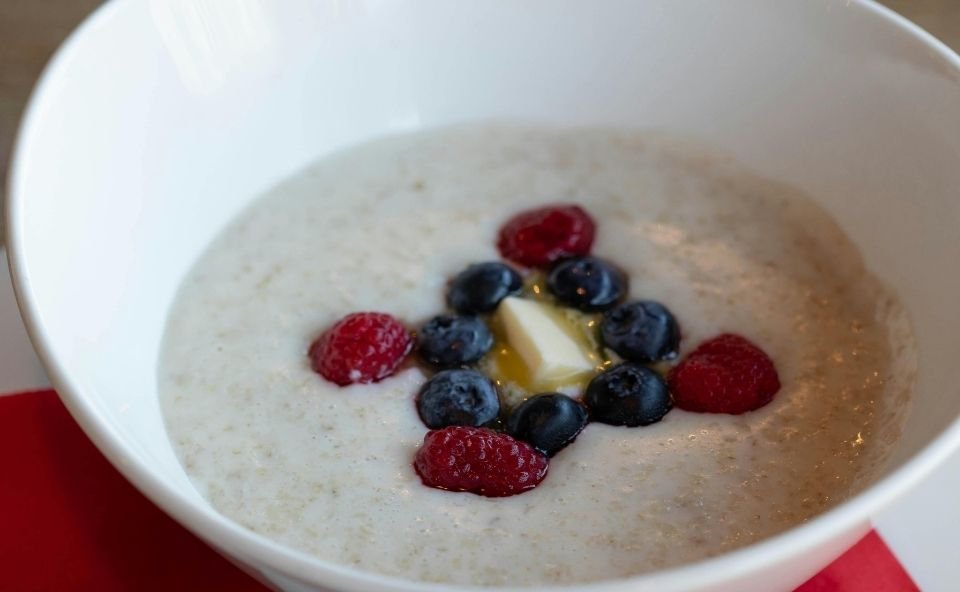
Oatmeal with blueberries, raspberries, and butter.
But breakfast isn’t the only way to enjoy oat groats! They work beautifully in savory dishes, too. Their chewy texture makes them an excellent addition to grain bowls and salads, adding a delightful bite and depth of flavor.
One trick I love is grinding them into oat flour—perfect for baking soft, flavorful breads, pancakes, or muffins.
No matter how I use them, oat groats always bring a natural, wholesome goodness that elevates every dish. If you haven’t tried them yet, trust me—you’re in for a treat!
Comparing Oats with Other Grains
I’ve found oats to be softer and quicker to cook than many other grains, making them a great option for a healthy diet. Their high protein content, rich fiber, and nutritional benefits make them a standout choice. Here’s a comparison to explore the differences, uses, and cooking methods of oats compared to other grains.
Frequently Asked Questions
Oat Groats vs. Oatmeal: Which One is Better?
Oatmeal is more processed and loses a small amount of its nutrients, oat groats contain everything nature intended. That’s why they’re one of the most nutrient-dense varieties of oats out there. The difference in nutrition is minimal, so it’s not really worth worrying about unless you’re aiming for the least processed option.
Either way, both choices are incredibly healthy, and no matter which one you prefer, just make sure to keep things balanced—maybe add some natural sweetness but not too much sugar on top!

Hi, I’m the voice behind The Bean Bite — someone who’s genuinely obsessed with beans! What started as a simple love for homemade lentil stew turned into a journey of discovering bean varieties, cooking tips, and their amazing health benefits. This site is my way of sharing that joy with you — one bean at a time.

